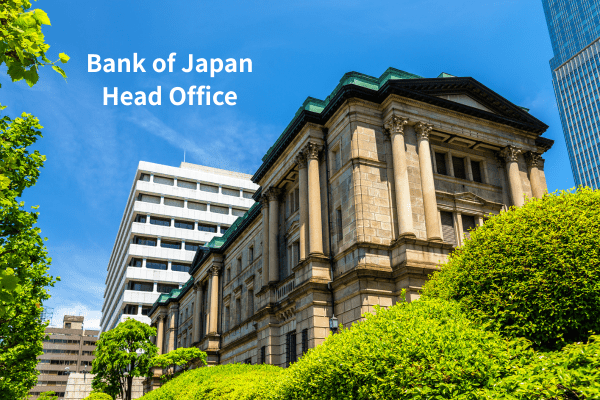
Granite and Tokyo Tour Series 2025 No.2 Bank of Japan Head Office
Share
Visiting the Bank of Japan Head Office — A Granite Monument of the Late 19th Century

On September 11, 2025, I visited the Bank of Japan Head Office located in Nihonbashi-Hongokucho, Tokyo. My purpose was not financial matters, but to appreciate the stone architecture of this historical building from the outside. Even without entering, the exterior alone conveyed great cultural and architectural value. This building remains one of the most important examples of late 19th-century stone architecture in Japan.
About the Bank of Japan

The Bank of Japan (BoJ) is Japan’s central bank, founded in 1882.Its primary functions include:
- Issuing currency: the only institution authorized to issue banknotes.
- Monetary policy: stabilizing prices and supporting economic growth.
- The bank of banks: providing funds and settlement services to commercial banks.
- The government’s bank: managing treasury funds and issuing government bonds.
For these roles, the Bank of Japan is often called “the guardian of money.”
A Landmark of Late 19th-Century Architecture

The head office was completed in 1896 and designed by Kingo Tatsuno (1854–1919), often called the father of modern Japanese architecture. Having studied Western architecture in Europe, Tatsuno brought advanced design principles back to Japan. The building adopts a Neo-Baroque style, combining dignity and solidity, and it remains designated as an Important Cultural Property.
Granite Walls Built with Kitagi Stone
The exterior walls of the Bank of Japan are built with Kitagi Stone (granite), quarried from Kitagi Island in Kasaoka, Okayama Prefecture. Kitagi Stone is fine-grained, durable, and workable, making it one of the most trusted stones in Japan’s architectural history. It has long been used in castle walls, bridges, shrines, monuments, and government projects. When wet with rain, the granite reveals a deeper, calm tone that conveys timeless dignity.
Kingo Tatsuno and His Major Works
Tatsuno Kingo, born in Saga Prefecture, designed numerous iconic buildings of modern Japan. His representative works include:
- Bank of Japan Head Office (1896)
- Tokyo Station Marunouchi Building (1914)
- Bank of Japan Osaka Branch (1903)
- Bank of Japan Kyoto Branch (1906)
- Nihonbashi Bridge (1911)
He also participated in the early project for Japan’s National Diet Building, contributing to the vision of a symbolic state architecture. Among his many works, the Bank of Japan Head Office stands out as a masterpiece that demonstrates the solemn beauty of granite.
Kitagi Stone in National Projects
Kitagi Stone was not only used for the Bank of Japan Head Office, but also for Nihonbashi Bridge and the National Diet Building. These were national-scale projects, and Kitagi Stone provided the enduring foundation. I also personally visited the Kitagi Stone quarry in April 2025.
Conclusion


This visit reminded me that the Bank of Japan Head Office is a truly robust stone building supported by Kitagi granite. Kitagi Stone has been essential not only here, but also in Nihonbashi and the National Diet Building, two other landmarks of Japanese national architecture. Those visits will be shared in separate articles to complete this architectural journey.
Quarry visit report 2025 No.1 Kitagi Island
